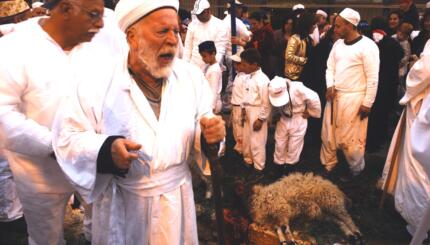It seems like the whole world is afire with Jonathan Safran Foer’s new haggadah, which he’s been planning since at least 2007. Although it’s just one of several new haggadahs out this year (which Foer himself seems to footnote), it’s gotten massive play — including, among others, a blurb (and a snarky joke!) by President Obama.
Foer himself appeared last week at the UJA to talk about his newest project. Here’s a little snippet:
Paley: What is your favorite part of the Haggadah?
Foer: I guess my favorite parts tend to be the ones that are most problematic, you know, most fraught. The ten plagues are a good example. How do we with kids make sense of it, the notion that a kind of communal judgment is passed on an entire population? Obviously there were Egyptians who were not guilty and yet their kids were killed too after God hardened Pharaoh’s heart. It’s very problematic.
So we could turn away from it, pretend it isn’t there, or we could say, “Here’s what we have, this is this document that is more than 3,000 years old, what meaning can we find in it and how can we apply that meaning to our lives?” One of the things that’s so exciting about the Haggadah is that it’s not just a mental exercise, it is intended to guide our lives, to bring us closer to that metaphorical Jerusalem of next year.
The Haggadah is nothing if not an aspirational book, and an optimistic book, a book that envisions something better, and questions what’s wrong with the present and how we can urge this moment toward a better moment. And that is the most dignified adventure that a human can go on, you know, wanting to participate in the repair of the world.
Haggadah
Pronounced: huh-GAH-duh or hah-gah-DAH, Origin: Hebrew, literally "telling" or "recounting." A Haggadah is a book that is used to tell the story of the Exodus at the Passover seder. There are many versions available ranging from very traditional to nontraditional, and you can also make your own.


